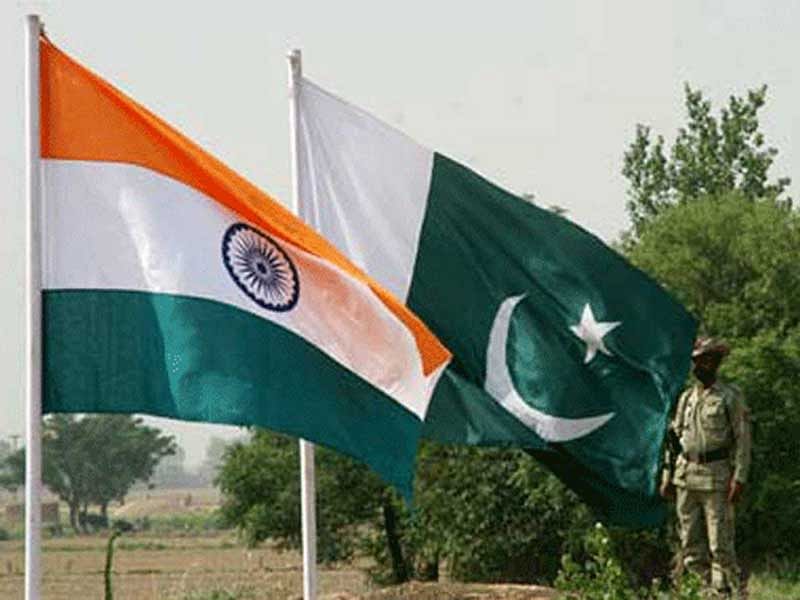
The suicide bombing attack on a CRPF convoy at Pulwama and, before that, the terrorist strikes on armed forces bases at Pathankot and Uri, among others, are points on the continuum of Pakistan’s three-decades-long proxy war to bleed India through a thousand cuts through state-sponsored terrorism and support for disaffected elements in Kashmir Valley. In addition, the two countries have been locked in an eyeball-to-eyeball confrontation on the Line of Control (LoC) since 1947-48.
Pakistan’s “deep state” (the army and the ISI) employs the military-jihadi complex comprising state-sponsored mujahideen of the Lashkar-e-Taiba (LeT) and Jaish-e-Mohammad (JeM) to launch terrorist strikes in Kashmir and against sensitive targets in urban centres elsewhere in India.
The stated aim of the proxy war being waged by Pakistan’s deep state is to wrest Kashmir from India and finish what it calls the “unfinished agenda of Partition”. It follows a strategy of disruption, denial, deception and disinformation. Incidentally, without massive Chinese support, Pakistan would be in no position to wage a proxy war against India. Hence, it is China’s proxy war as well, and Pakistan is a key tool in its plans to destabilise India.
In the interest of avoiding large-scale conflict – primarily to give its economy an unfettered opportunity to grow, India has opted to limit its counter-insurgency and counter-terrorism fightback to its own territory. India’s strategic restraint and unbounded patience have failed to bring Pakistan to the negotiating table. It has been clear for a long time that Pakistan’s quest to keep the pot boiling in Kashmir and destabilise India will not change.
How, then, should India respond to Pakistan’s repeated acts of grave provocation, which have repeatedly tested India’s threshold of tolerance?
Since strategic restraint has not worked, India must upgrade its strategy to compellence by imposing unbearable deterrent costs on Pakistan’s military-jihadi complex. India’s response should be proactive, not reactive, as in the past. A comprehensive strategy should be formulated to achieve long-term objectives. The strategy should be multi-disciplinary in approach and comprise military and non-military, overt and covert actions.
Military force should be carefully calibrated to avoid untoward escalation. Large-scale conventional conflict between two nuclear-armed neighbours runs the risk of spiralling out of control to nuclear exchanges in the event of misjudgement on either side.
In nuclear deterrence lexicon, the “stability-instability paradox” is well known: when there is stability at the strategic level through mutual deterrence between two nuclear-armed countries, at the tactical level low-intensity military action can be initiated with impunity. Pakistan’s proxy war is nothing but blackmail through mercenary jihadis under the shadow of its nuclear umbrella.
When the war bugles begin to sound in South Asia, the world fears that it will once again witness the spectre of mushroom fireballs lighting up the sky as Pakistan loses no time to threaten the use of nuclear weapons. After India’s trans-LoC air strikes on February 26 following the terrorist attack at Pulwama, Prime Minister Imran Khan delivered a veiled nuclear threat even as he offered talks with India: “With the weapons you have and the weapons we have, can we afford a miscalculation?”
Some diplomatic and economic measures have already been initiated. The UN Security Council has called on Pakistan to put an immediate end to trans-border terrorism. Pakistan has been isolated in SAARC. India has withdrawn the “most favoured nation” status to Pakistan and imposed 200% duty on imports from that country.
The aim of military measures should be to inflict punishment on both the Pakistan army deployed on the LoC and terrorist training camps and related infrastructure in Pakistan-Occupied Kashmir. For each new act of state-sponsored terrorism, the scale and intensity of the punishment inflicted should be increased by an order of magnitude.
Military operations should include artillery, rocket and missile strikes with precision-guided munitions (PGMs) on brigade and battalion HQ, communications centres, logistics infrastructure, ammunition dumps and key bridges.
Trans-LoC attacks by troops should be limited to raids by Special Forces and border action teams (BATs) like the surgical strikes launched in September 2016. Brigade-level or larger infantry attacks must be avoided.
The employment of fighter aircraft, particularly those armed with precision-guided munitions (PGM) launched from a stand-off range on the Indian side of the LoC remains a viable military option and should continue to be exercised. As long as the international boundary in Punjab, Rajasthan and Gujarat is not crossed by IAF aircraft, escalation by Pakistan is unlikely.
When the Pakistan army begins to hurt and bleed, gradually the deep state will realise the futility of its designs on India. While Pakistan may not give up its claims on Jammu and Kashmir, it will be eventually forced to come to the negotiating table to discuss a long-term solution to the dispute through peaceful means. Simultaneously, India must resume the almost defunct political process to address the sense of alienation of the people of Kashmir Valley, and initiate negotiations to integrate the state with the national mainstream based on the principles of “Jamhooriyat, Insaniyat and Kashmiriyat”, as promised by former prime minister Atal Behari Vajpayee. The first step should be to hold early elections in the state.
The surgical strikes launched after the attack at Uri and the trans-LoC air strikes after the suicide bombing at Pulwama have drawn new lines in the sand. India has sent a strong message that the paradigm of India’s counter proxy war strategy has changed. Pakistan will do well to rein in its mercenary jihadis.
(The writer is former Director, Centre for Land Warfare Studies (CLAWS), New Delhi)